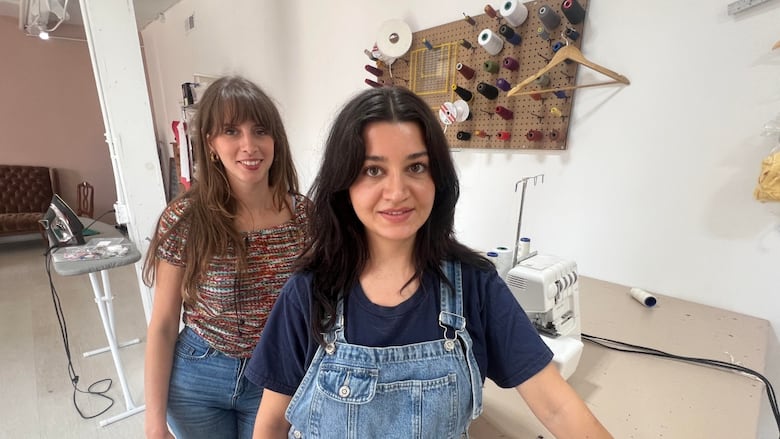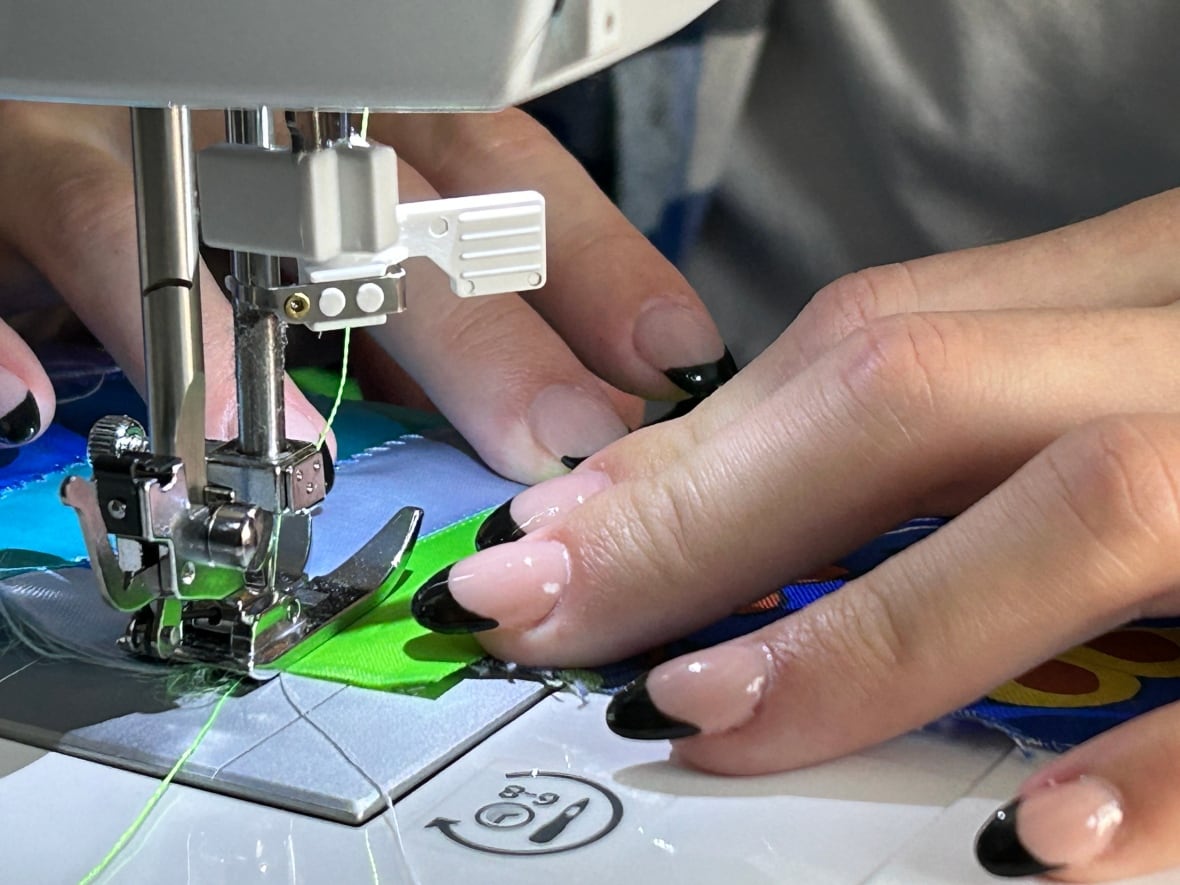As fabric and pattern options alter, sewing enthusiasts have to zig-zag a bit
Some retail stores have closed, but demand for sewing classes remains strong

Like many who've been seduced by sewing, Riley Papp has spent many happy hours combing through fabrics at large retail stores seeking inspiration for her next creation.
"It was definitely important for us to be able to go in and feel the fabrics and know what we'd need for a certain project," said Papp, "But nowadays, we are seeing fewer and fewer options."
Fewer because, like many brick-and-mortar retail businesses, fabric stores are facing new challenges in the age of online shopping.
Earlier this year, the U.S. fabric retailer Joann closed 800 of its stores after being unable to find a buyer.
In London, Fabricland continues to operate a large store on Wonderland Road but closed a north London location last year. Len's Mill and smaller stores continue to sell fabric, but the retail options for buying textiles aren't what they once were.
A graduate of Fanshawe College's fashion program, Papp co-owns Sew It Goes with her partner Ninwa Tolo. They operate out of a former industrial space on Kitchener Avenue and do custom clothing designs. They also offer sewing classes.
Increasingly, the pair and their students have to go online to find textiles for their projects, but it's a shift that has come with challenges. More than most products bought online, fabric choices are very much about touch and feel.
"We're shifting to buying online for most things, that's easy, but with fabric it's quite hard if you don't know what you're looking for," said Papp. "Specifically, the different weights of fabric, you can't really know just by seeing the weight listed. I think it's becoming more common for people to have to buy fabric online."
Another sewing shift is that the traditional paper patterns by Simplicity, McCall's and Butterick are no longer being made under those brand names. Once a fabric store staple, the patterns include detailed instructions and trace paper to guide each cut of the fabric.
People who sew have to be creative problem solvers, and Papp said people are figuring out new ways to get their projects made.
Pattern files are available online from various sources, though they generally require the buyer to print out and join multiple sheets of paper. As many as 40 sheets of standard printer-sized paper may be needed for a larger garment, such as a coat or gown.

A new method involves projecting the image of a digital pattern down onto fabric spread out on a cutting table.
Papp has used online patterns but said the quality control is often lacking.
"There are a lot of patterns generated by AI," she said. "I've bought some and they're pretty terrible."
Demand for sewing still strong
Kelly Bell has made the shift from designing clothes to teaching classes through her company, Simply Sewing With Kelly.
Students often come to her needing help with a sewing project they couldn't complete while trying to follow a confusing YouTube video or an obscure downloaded file.
"The patterns people are bringing to me, some of them are great and others are so bad that the students are just lost," said Bell. "That's the sad thing about online patterns, you just don't know how good the instructions are going to be."
The changes to the sewing retail fabric and pattern business have been a challenge, but said people's interest in learning to sew hasn't skipped a stitch, Bell said.
"The demand is huge. I sometimes have to turn students away," she said. "The need is there, people are definitely interested. Kids really want to do this stuff. Once kids learn to sew, they'll stick with it for years and years. I've had kids start at seven or eight years old, and the next thing I know, they're driving to sewing class themselves."
Students' desire to save money by making their own clothes and "upcycling" old fabrics remains a huge driver of interest in sewing, Bell said. One of her students recently made a "gorgeous" linen skirt using as source material an antique tablecloth bought for $1 at Value Village.
It's a similar story for Sew It Goes — People want to learn, and they're working through changes in the sewing industry, Tolo said.
"There's a lot of people who are still interested," said Tolo. "We have people from like nine to any age."